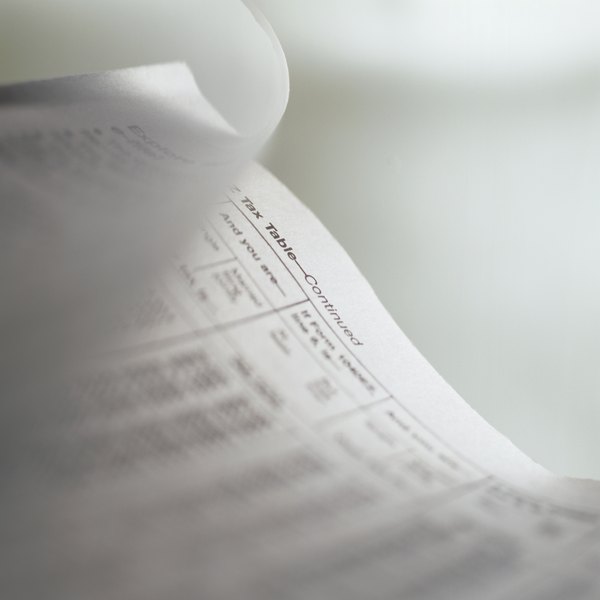What Is Unrecaptured 1250 Gain?
Unrecaptured 1250 gain comes into play when you sell depreciated properties.
Duncan Smith/Photodisc/Getty Images
Making money when you sell an asset is always a good thing – until tax time. At that point, you may owe capital gains tax on the money you made. If the item you sold was a rental house that depreciated in value, the taxes you owe on the amount that was depreciated will be different from the taxes you owe on any profit. The depreciated amount is called “unrecaptured 1250 gain.”
Tip
An unrecaptured 1250 gain can be defined as the the amount of tax you owe on the depreciated value of a rental property.
About Rental Home Depreciation
The IRS allows the owner of a rental home to depreciate the cost of the home itself on his income taxes. You can only depreciate the property if you purchased it and kept it for more than one year. In other words, if you buy a rental house, fix it up, and sell it within the same year, you won’t be able to depreciate the cost of buying it. Depreciation is calculated using the modified accelerated cost recovery system, which depreciates property over a series of years based on the type of property.
The IRS defines rental property as “any building or structure where 80 percent or more of its gross rental income is from dwelling units,” with the useful life of rental property being defined as 27.5 years. So the calculation used to depreciate a property would be what you paid for it, defined as its cost basis, multiplied by the percentage of business use it gets. You would divide this by 27.5 years to get the depreciation value for your taxes. A tax professional can also help you calculate this number.
Separating Unrecaptured Section 1250 Gain
Things can get a little tricky when it is time to sell that rental property. If you purchased the rental home for $100,000 and sell it for $180,000, you’ll have to pay capital gains taxes on the $80,000 you earned. However, you took a depreciation of $20,000 on that $100,000 over the time you owned it, which means $20,000 of that original $100,000 should be taxed differently. The $20,000 is known as unrecaptured Section 1250 gain by the IRS.
Your capital gains tax is based on your regular tax bracket, while your unrecaptured Section 1250 gain is a flat rate. For 2018, long-term capital gains are taxed up to 15 percent for high earners, and the unrecaptured Section 1250 gain is now a flat 25 percent. So you’d pay 25 percent on $20,000 of the sale and up to 15 percent for the other $80,000, depending on your income. You can calculate your unrecaptured Section 1250 gain using the worksheets within IRS instructions for Schedule D. Once you have the amount, go to Schedule D and input the amount on Line 19.
Offsetting Capital Gains with Losses
Although you will owe taxes on your capital gain, you can reduce the amount of taxes you’ll pay with capital losses. This calculation is done when determining your home’s cost basis, which factors in items above the purchase price of your property. So if you purchased a rental home for $100,000 but put $20,000 into renovating the house and paid $3,000 in closing costs, your cost basis would be $123,000.
Note that you can only do this if you didn’t claim the renovation expenses or closing costs on your taxes at any point previously. This cost basis applies to all real estate sales that have a taxable capital gain. You also can’t include costs you put into simply repairing the property, so the costs you claim have to be related to improving the property in a way that increased its market value, such as retiling a bathroom or replacing carpets with hardwood floors.
References
Writer Bio
Stephanie Faris has written about finance for entrepreneurs and marketing firms since 2013. She spent nearly a year as a ghostwriter for a credit card processing service and has ghostwritten about finance for numerous marketing firms and entrepreneurs. Her work has appeared on The Motley Fool, MoneyGeek, Ecommerce Insiders, GoBankingRates, and ThriveBy30.

